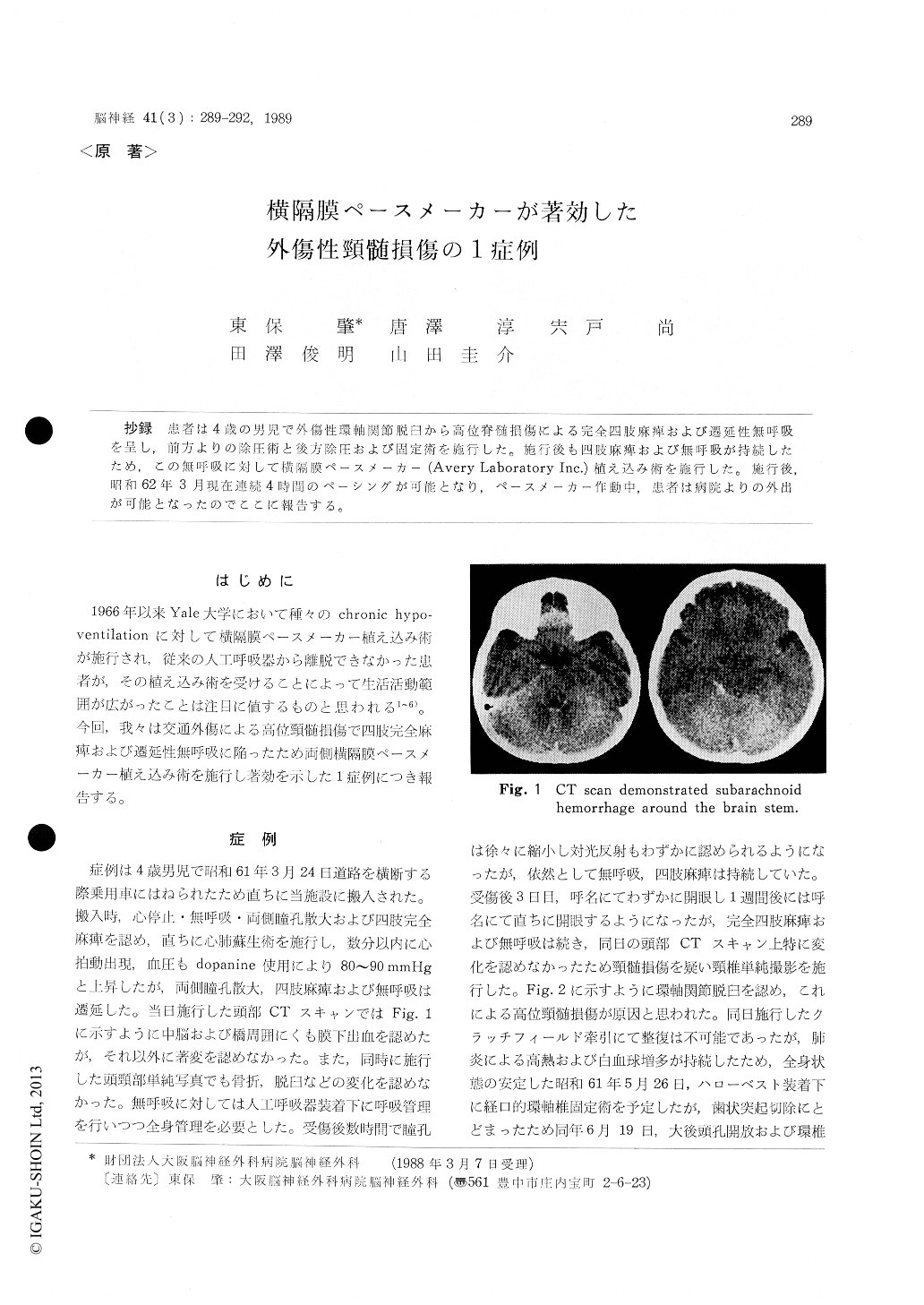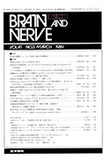Japanese
English
- 有料閲覧
- Abstract 文献概要
- 1ページ目 Look Inside
抄録 患者は4歳の男児で外傷性環軸関節脱臼から高位脊髄損傷による完全四肢麻痺および遷延性無呼吸を呈し,前方よりの除圧術と後方除圧および固定術を施行した。施行後も四肢麻痺および無呼吸が持続したため,この無呼吸に対して横隔膜ペースメーカー(Avery Laboratory Inc.)植え込み術を施行した。施行後,昭和62年3月現在連続4時間のペーシングが可能となり,ペースメーカー作動中,患者は病院よりの外出が可能となったのでここに報告する。
A four-year-old boy had traffic accident and was transfered to our hospital with cardiorespi-ratory arrest, on March 24, 1986. After resus-citation, quadriplegia and apnea were sustained. Computed tomography (CT) scan on the day of admission only demonstrated subarachnoid hem-orrhage and plain roentogenograms of the skulland cervical spine showed no abnormalities. He opened his eyes to verbal order one week later, but apnea and quadriplegia sustained. CT scan obtained on that day demonstrated no abnormal-ities but roentogenogram of the cervical spine showed atlanto-axial dislocation. On May 26, 1986, he was treated with densectomy through transoral approach. Furthermore, on June 19, he underwent laminectomy of the atlas, partial craniectomy of the occipital bone, and posterior fusion with iliac bone graft. However, apnea continued, and bilate-ral diaphragmatic pacemaker (Avery Laboratory Inc.) was planed : On Sept. 18, platinum and silicone rubber electrodes were surgically im-planted on the both phrenic nerves at the cervical portion. Each electrode was connected by lead wire and connector to a radio-frequency receiver which was implanted in a subcutaneous abdominal pocket. An external transmitter supplied electrical power and information of the stimulation to the implanted receiver by radiofrequency across the skin. Pacing time was gradually prolonged and continuous pacing for four hours could be success-fully gained by March, 1987. Pneumonia once occured in the course of gradual prolongation of the pacing time.
The ideal candidates for diaphragmatic pacing are patients with normal phrenic nerves, dia-phragm, and lungs. Chronic alveolar hypoventila-tion amenable to augmentation by diaphragmatic pacing is the result of malfunction of the respi-ratory control centers (central alveolar hypoven-tilation or a lesion involving the upper motor neurons of the phrenic nerves). Diaphragmatic pacing is indicated in cases with injury to the spinal cord above C-3. In this report, clinical application and complications of electrophrenic respiration are discussed.

Copyright © 1989, Igaku-Shoin Ltd. All rights reserved.


